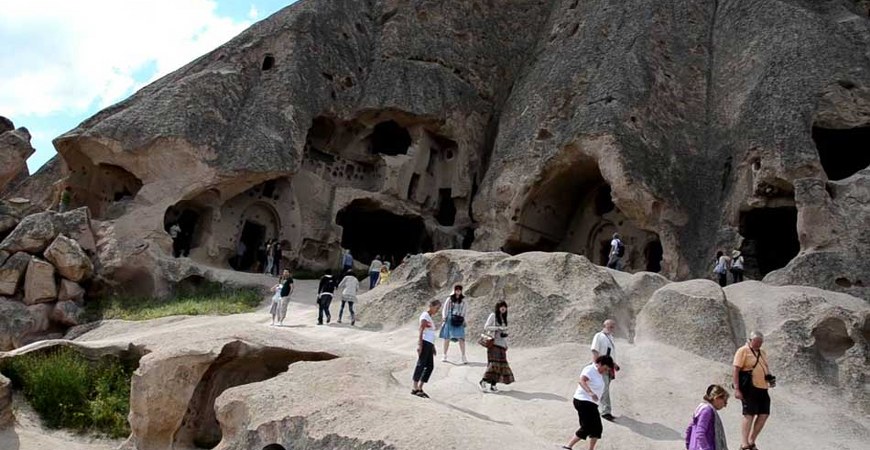13th Century Cappadocia and Religious Centres Of Rocky Cappadocia,
As mentioned before it is not possible to see any paintings of late 11th and 12th centuries. The religious centers were abandoned and only a certain degree of activity is seen at the beginning of the 13th century. Nearly 10% of the paintings are of this date. The frescoes of this period are of low-quality craftsmanship, the colors being exaggerated. They show crude copies of earlier frescoes. The traditional art of Cappadocia was forgotten and relations with other parts of the Empire were very loose. The painters could go no further than just imitating the 11th-century art badly. An example is the 40 Martyrs Church in Sahinefendi (1216-1217). On the northern nave, 40 Martyrs of Sebaste are seen naked on the ice. Although 11th century Byzantine Art traditions are kept the figures are crude and clumsy. The bodies are painted in a strange and unnatural way with expressions of the old style. The scene as a whole is an unsuccessful imitation of the ones in Goreme. The church with the latest paintings is the St. George church in Ihlara 1283-1295. After this, there was a long break in the art of mural painting in Cappadocia until the 19th century.
Religious Centres Of Rocky Cappadocia
The term “Rocky churches of Cappadocia” is generally used for the villages and monasteries established on the volcanic masses of Mount Erciyes and Mount Ha-son. They are especially concentrated around Urgup, Ortahisar, Goreme, and Soganli. The rocks were hollowed for religious and settlement purposes. But they are different from the other churches of Anatolia. On the other hand, they show a special character in number and in concentration around Orgilip and the Peristrema Valley. When the beauty and variety of nature are added to these it is easier to understand the reason for the attractiveness of the region for visitors. The religious centers were founded at some distance from the villages. We can see a continuity of settlement as these places have been used since prehistoric times. The oldest churches were near the cemeteries. The columns of the churches in Avcilar and Mavrucan are Ionic in style. In the other places, early Christian architecture is used. There are some open tombs of which we have no knowledge either of their owners or dates. The volcanic tuff is very suitable for growing cereals, vegetables, and fruits if irrigated. By this way, the monks and peasants could live side by side.



































































































































